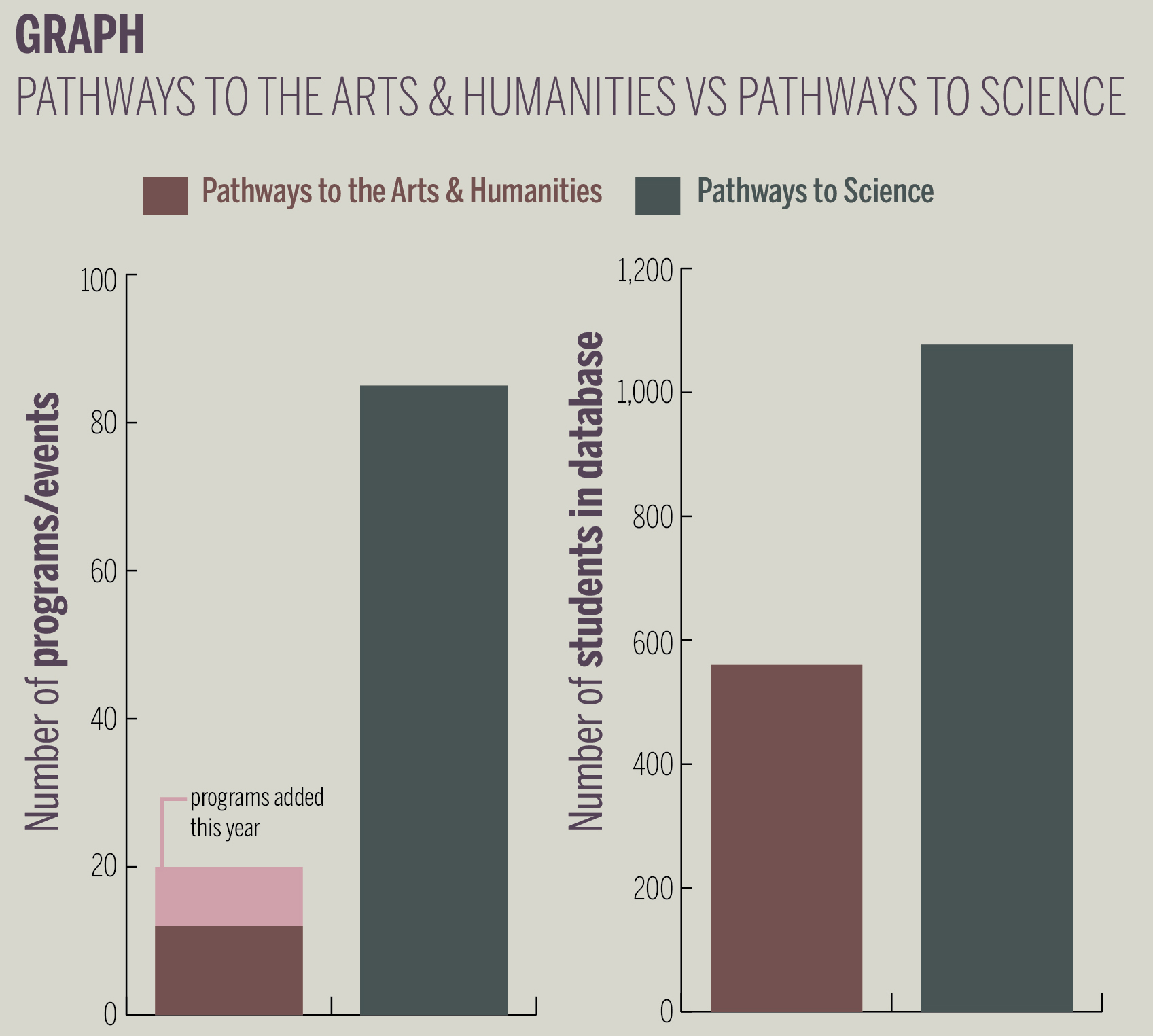
Administrators from the Office of New Haven and State Affairs have begun to craft a network knitting together the wide variety of arts and humanities programs for New Haven Public Schools students offered by the University.
The Pathways to the Arts & Humanities program, established last academic year, aims to help young scholars by linking them to various events and opportunities at the University. It is modeled after Pathways to Science, a gateway program which provides resources for about 1,000 middle and high school NHPS students interested in pursuing STEM careers. The infrastructural initiative has begun to gain traction this semester, with ONHSA adding nine new programs and events to the 12 flagship programs already under the Arts & Humanities umbrella this year, according to Arts & Humanities Partnerships Coordinator Lynda Blancato.
Pathways to the Arts & Humanities provides logistical support for Yale-associated organizations, ranging from the School of Music to undergraduate groups like the Yale Children’s Theater, that run programs targeting local schoolchildren, Director of Public School Partnerships Claudia Merson said. This infrastructure enables these groups to more easily reach their audiences, she added.
“The University as a whole is actually committed to being a good citizen and working with New Haven,” Merson said. “At the same time, faculty, undergraduates and grad students have their own obligations and full-time jobs. What we learned with STEM was that this kind of infrastructure makes it really easy for people to bring their content and bring richness they have without having to do a lot of the administrative work.”
Through Pathways, students who participate in one of the University’s programs can more readily discover and engage with other Yale programs, administrators said.
Associate Dean of the School of Music Michael Yaffe, who oversees programs such as the Music in the Schools Initiative and the Morse Summer Music Academy, said Pathways has enabled music program participants to learn about events in other disciplines. He added that last summer, the Morse Summer Music Academy attendees participated in activities at the Yale University Art Gallery through connections created by Pathways.
This set of extra resources that guide local students to other opportunities at the University is unique to Yale, Merson said, adding that most other universities lack this component in their programming for local students.
Merson’s department first began holding meetings in January 2014 to discuss the concept of a unified arts and humanities outreach initiative with representatives from branches of the University that already host programs on their own, such as the Yale Center for British Art and the Beinecke Rare Book & Manuscript Library. These “major players” were unanimous in their support of the concept, Blancato said, adding that some institutions had independently created intra-University collaborations for students. Merson and Blancato then proceeded to create a database of NHPS students who have participated in these programs, similar to the one already in place for Pathways to Science.
The database tracks students from middle school to the completion of their college years, recording the University programs that they participate in over that time. By keeping tabs on student participation, the database serves as a central resource for University-affiliated individuals starting new humanities programs or NHPS officials looking to further engage their students in the arts, administrators said. Currently, the Arts & Humanities database lists over 550 students, while the Science database now contains over 1,000 names, Merson said.
For Raffaella Zanuttini, the director of undergraduate studies of the Linguistics Department, the support provided by Blancato and Merson enabled her to overcome the “major challenge” of not knowing how to reach Elm City students about the North American Computational Linguistics Olympiad hosted by her department. In the two years that the department has held NACLO on campus, ONHSA’s outreach efforts not only have linked Zanuttini to relevant teachers and coordinators in local public schools, but also more directly to students who have expressed an interest in NACLO.
Val-Jean Belton, the principal of the Cooperative Arts and Humanities High School downtown, said both Merson and Blancato work closely with the school to involve students in programs such as the O’Neill Playwriting Program, which connects Yale School of Drama playwrights, undergraduates and Co-Op students to create original works each year.
“The benefits are great for our students because we’re an arts and performance school,” Belton said. “[The connection] gives them opportunities to explore other things, but also gives them the opportunity to see what’s going on in the Yale community and to be part of that community and that campus.”
Blancato said that she is currently working on connecting the Beinecke and its upcoming exhibits to New Haven school librarians, who can then integrate that material in their work.
The Beinecke will reopen this fall.







